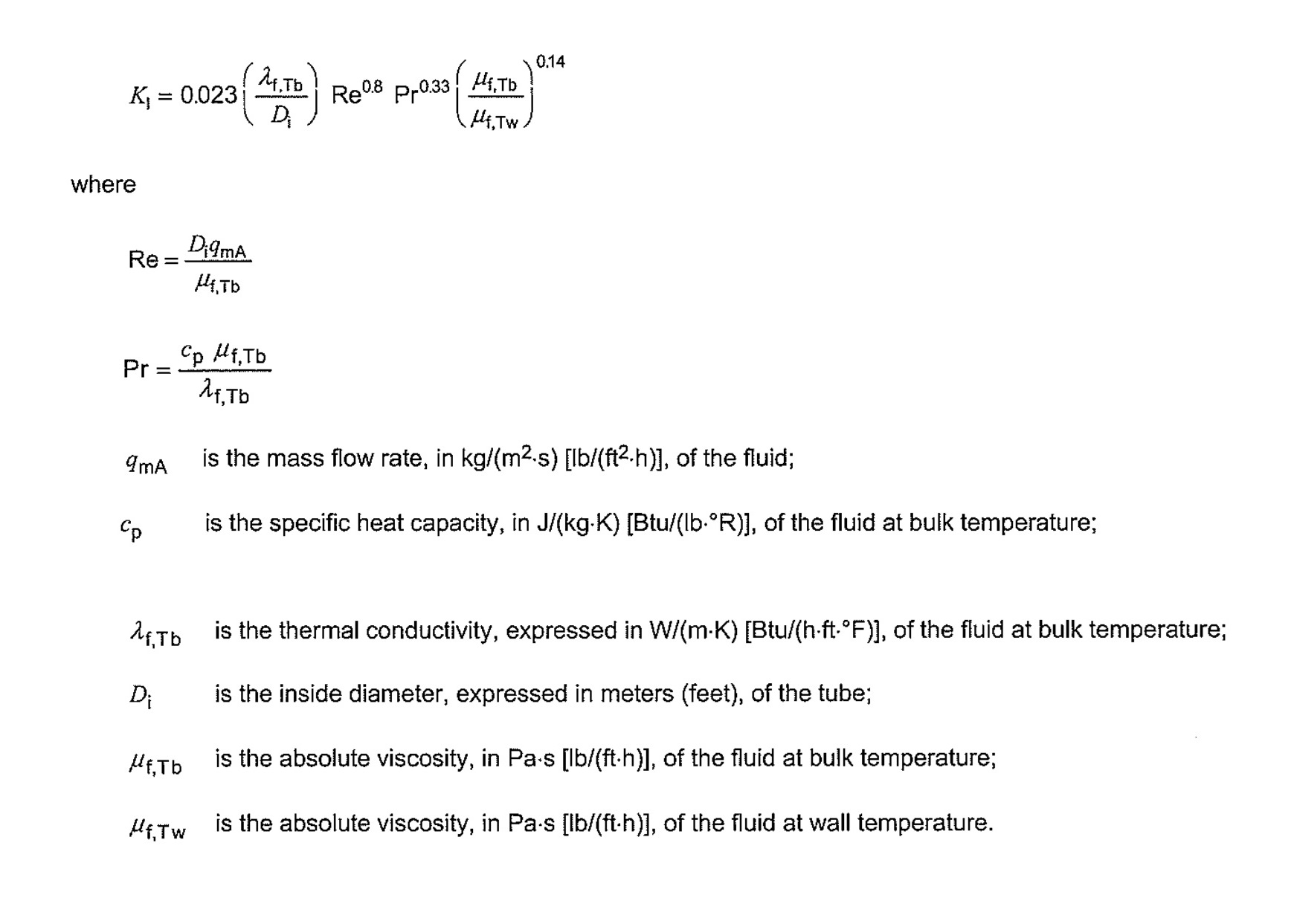The highest temperature of the tube metal (TMT) may be situated near the process outlet of the heater or elsewhere, influenced by several factors such as the internal film coefficient, radiant heat flux, heater and tube geometry, internal fouling, and the flow regime of the fluid. In specific scenarios like vacuum heaters, a detailed analysis from the fluid outlet up to just before the initial boiling point (IBP) is recommended.
Determining the fluid heat-transfer coefficient on the inner wall of the tube is crucial for accurately calculating the maximum tube metal temperature. Although widely used and accepted in heater design, the standard correlations for estimating this coefficient come with certain inaccuracies typical of simplified models used to represent complex interactions.
For single-phase fluids, the heat-transfer coefficient is derived using one of two equations based on the Reynolds number (Re) and the Prandtl number (Pr). This guide does not cover correlations for laminar flow due to its rarity in process heaters and the lack of reliable data for determining the internal coefficient in laminar flow for the oil inside typically used tube sizes.
For liquid flow conditions where the Reynolds number (Re) exceeds 10,000, the heat-transfer coefficient can be computed as follows:

From: API 530 Annex B
For vapor flow with a Reynolds number greater than 15,000, the heat-transfer coefficient is given by:

From: API 530 Annex B
The material properties, except for the absolute viscosity at the wall temperature (μ_Tw), should be evaluated at the bulk fluid temperature. To convert absolute viscosity from millipascal-seconds or centipoise to pounds per foot per hour, multiply μ_Tw by 2.42.

From: API 530 Annex B